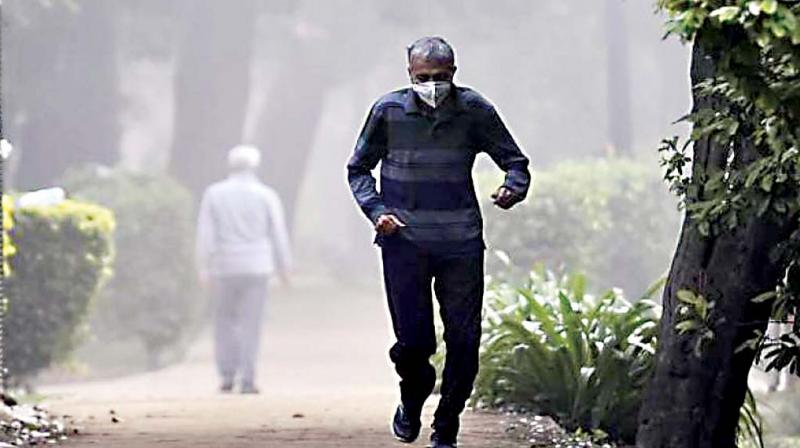Bioaccumulation: There’s something in the air
Aerosol formation is another significant impact of air pollution, which is formed by the dispersion of solid or liquid matter in the atmosphere.

Research across the globe clearly shows that air pollution has long lasting impacts on ecosystems and their services and goods. To be specific, there is evidence that air-pollutants like Sulphur could lead to high amounts of acid in lakes, streams, rivers and may also damage trees, soil, etc. Excess Nitrogen in the atmosphere affects fish and other aquatic organisms when the same gets deposited on the water surface. It is also noted and studied that Ozone can damage leaves of various tree varieties in different types of ecosystems. Heavy metals like Mercury and others, which are emitted into the atmosphere, due to combustion, get deposited on land and also in water get accumulated in plants and animals. And this also gets in to the human food chain as it is consumed by people. This is known as Bio-Accumulation, which is a dangerous phenomenon especially with hazardous and toxic chemicals that are commonly used today across the globe.
However, air pollution has lot more impacts which are also clearly visible to us off late.
Oxides of nitrogen and sulphur react with water in the atmosphere producing sulphuric acid and nitric acid, which come down along with the rain and hence this phenomenon is termed 'Acid Rain'. The basic composition of Acid Rain is sulphuric acid, nitric acid and some carbonic acid. Acid Rain can cause various adverse impacts on humans and the environment. Number of skin disorders, respiratory problems, loss in productivity of plants by damaging its leaves, loss in soil quality through leaching, enters groundwater and river waters which further harms the aquatic ecosystem, damage buildings, especially historical and heritage monuments.
According to several estimates across the world, if the current trend of rise in air pollution increases, the average global temperature will go up by at least 3°C to 7°C in the next 50 years. This will severely affect the climate in different regions, distribution of plants and animals in ecosystems, will bring about disturbance in agriculture and food production, melting of snow caps and therefore the rise in sea levels, which will surely submerge parts of coastal cities like New York, London, Calcutta and other major cities.
Another interesting phenomenon is when pollutants like hydrocarbons and oxides of nitrogen combine in the presence of sunlight leading to the formation of Smog. This mixture of gases formed by photochemical reactions is known as the 'Photochemical Smog'. The typical characteristic feature is the yellowish brown haze that is formed especially in Winter. This Smog causes many respiratory disorders, allergies and related ailments since it contains polluting gases. The visibility is also very less when Smog is formed.
Aerosol formation is another significant impact of air pollution, which is formed by the dispersion of solid or liquid matter in the atmosphere. These aerosols are known to form a thick layer in the troposphere which then affects the weather conditions by blocking solar radiation. The Aerosols are also found to be deposited on leaves, which in turn affect the process of photosynthesis.
Ozone, as we all know, absorbs the Ultraviolet (UV) rays present in the sun's radiation and protects the Earth and all living creatures from the harmful effects of UV rays. But unfortunately, hydrocarbons such as Chloro-fluoro-carbons (CFCs) destroy the ozone molecules and thereby depleting the ozone layer. Large numbers of Ozone holes have been detected in the atmosphere which allows UV rays to reach the earth's surface. Ozone depletion is very clearly visible in countries like Australia and New Zealand where the rate of skin cancer is higher than other regions of the world. In fact India and other Asian countries are also in the race.
Thus, if we continue to grow in this manner, it would just be a matter of few years when every individual will be the victim of air pollution. And this year's World Environment Day theme is rightly focusing on reducing air pollution across the globe. But just observing World Environment Day will make no difference. We need to implement appropriate models of sustainable development if we & the future generations need to live on this planet for a longer time. Drastic changes in our lifestyle, focus on ecologically sound policies & framework and a sensitive government with a strong political will can only bring about the changes for a better future.
